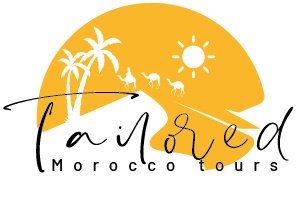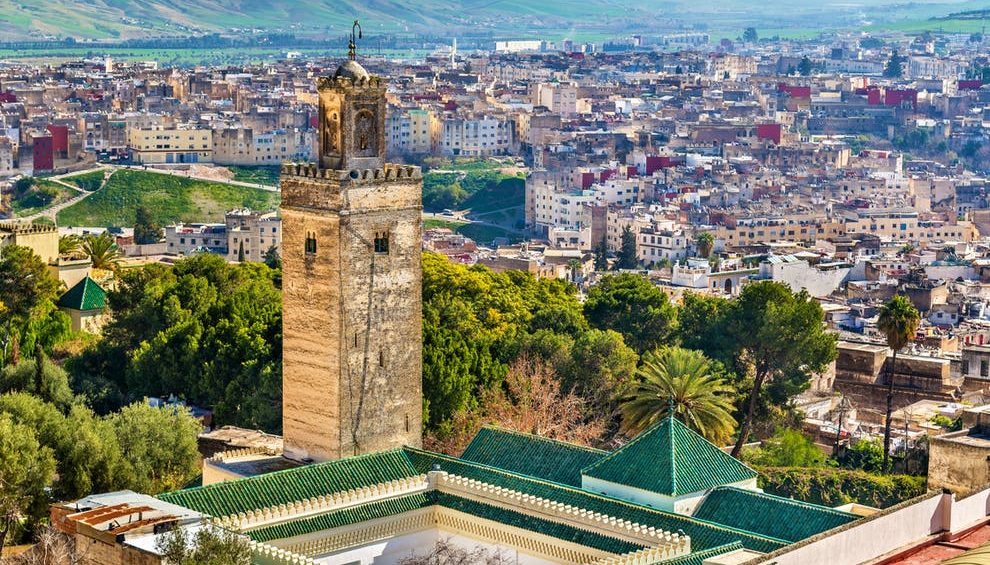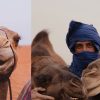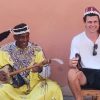The way to explore Fes Medina should begin with The Bab Boujlloud Gate. The first place to go is the vast Inania medersa, the largest. Inania medersa is notable for its cedar woodwork, sculptured stucco, and marble and onyx-adorned decoration. Suppose you continue on Talaa Kebira Street (big climb). In that case, It is a great place to be awed by the Tijani Zaouia (zaouia, sacred space of a religious community) and the makers of instruments souk. You will then arrive at the Mzara (shrine) in the tomb of the once-great monarch Moulay Idriss in the exact spot where he decided to establish the town.
The Medina, Fes City
After you’ve passed the babouche traders, You arrive at the En-Nejjarine square and the souk for cabinetmakers. The square’s exquisitely carved foundouk (caravanserai) is home to its Museum of Wooden Arts and Crafts. Kissaria (covered market) is where the finest fabrics and jewelry are available for sale close by (it is closed late at night). In the vicinity is the most frequented and admired tourist attraction in Fes The zaouia, the tomb of Moulay Idriss, the town’s founder.
The Tanners’ Quarter
The walk continues towards Es-Seffarine Square, the coppersmith square, and finally to The Tanners’ area just before the Andalusian quarter. It is home to the mosque as well as the Es-Sahrij medersa. Your walk concludes with the ancient Dar Batha Palace, whose Arabo-Andalusian style must be explored thoroughly. Because it is focused on the art and culture of Fes and the surrounding areas, it provides an excellent overview of the traditional products from the town, which is famous for its skilled artisans.
This vibrant museum also hosts concerts from the Festival of World Sacred Music held every year in June. The Moqui Palace, hidden behind white walls, contains treasures of unique design and architectural excellence. Enjoy the experience by staying at the Jamai Palace, previously the residence of a wealthy vizier, now the hotel.
Tissa Horse Festival Trip from Fes
Tissa is A town situated 30 miles away from Fes. It is a one-hour excursion in which the Tissa Horse Festival takes place in October, transforming Tissa into a party city. The town is always a party with entertainment, dancing, traditional meals, and luxurious tents. The primary occasion is when riders wear colorful costumes demonstrating their skills as equestrians and the high quality they have in their Purebred Arab or barb horse.
Zaouia Moulay Idriss II Shrine
Zaouia Moulay Idriss II is considered one of the medina’s holy shrines. It is dedicated to the man who established Fes, the capital city. Fes and to the ruler of Morocco from 807 until 828. The shrine was built in 1824. It was designed commonly in Moulay Idriss’s reign. Muslim tourists view visiting the shrine to be luck. Many women believe that going to the location will aid in fertility issues. For the rest of us, you can see an area stunning inside, along with the grave from the front, and observe the burning of incense and candles.
Famous Kairouine Mosque
Kairouan Mosque is the second largest mosque and is among the oldest in Morocco. The mosque was constructed in the 9th century by Fatima al-Fihri, the daughter of an affluent Tunisian. The mosque isn’t accessible to non-Muslims, but it is possible to look at the stunning interior, which features two chandeliers that originated as church bells from Andalusia. Its Islamic college is frequently referred to by its name as among the longest-operating universities in the world.




